Coronavirus Australia live news: Scott Morrison hits back at Qld Deputy Premier over Palaszczuk ‘tear down’
Scott Morrison says he won’t buy into ‘insults’ from Qld’s Deputy Premier, as border lockdowns cloud positive economic news.

- PM hits back over ‘tear down’ claim
- Unemployment plunges to 6.8pc
- NSW adds five new cases
- Victoria has 28 cases, 8 deaths
Welcome to The Australian’s rolling coverage of the ongoing coronavirus pandemic. Scott Morrison has hit back over claims he tried to ‘tear down’ Qld Premier Annastacia Palaszczuk. Australia’s unemployment rate has plunged to 6.8 per cent in August from 7.5 per cent in the month before as the economy added another 111,000 jobs in the month despite the drag from Victoria’s second wave.
The PM rejected suggestions the commonwealth use its own planes and camps for returned travellers under raised caps in the quarantine system. Victoria records 28 cases, eight deaths. NSW adds five new cases while Queensland adds one.
Natasha Robinson 9.35pm: Covid mortality rates lower in Australian hospitals
The mortality rate of patients admitted to public hospital intensive care units with COVID-19 in the first wave of the pandemic in Australia was lower than in other parts of the world, with four of out of five patients placed on a ventilator surviving the disease.

A study published in the Medical Journal of Australia that documented 90 per cent of COVID-19 ICU admissions up to July 5 found that the death rate for COVID-19 patients who required ventilation in ICU was 22 per cent, while the mortality rate was 5 per cent for those in ICU who did not require ventilation.
The study also revealed that public hospitals in Australia came nowhere near being overwhelmed by the pandemic. The median peak ICU bed occupancy for the 77 intensive care units that participated in the study was calculated at 14 per cent.
Read the full story here.
Tim Dodd 9.05pm: Online teaching helps uni cut losses
The University of Sydney has improved its financial position this year by nearly $300m after making a major effort to keep international students, caught overseas by the COVID-19 travel ban, enrolled in online classes.
The university told staff on Thursday that the $470m revenue loss which had been expected in April had now been reduced to $184m for 2020.
But vice-chancellor Michael Spence warned that significant revenue hits from COVID-19 would continue for the next three to four years, and said formal consultations had begun on a voluntary redundancy scheme to cut jobs next year.
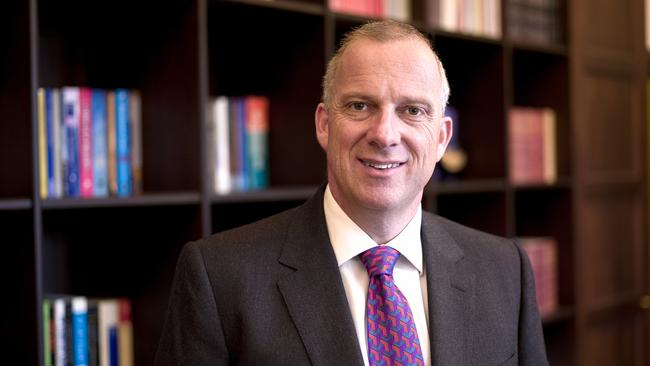
“We cannot feasibly continue to operate in the type of austerity environment that we have been subject to in 2020,” he told staff in an email.
Because of the “pipeline” effect on student numbers — a student who doesn’t enrol this year is also not enrolled for the following years of their multi-year course — the revenue hit on the university budget from absent international students is expected to grow.
Read the full story here.
Rosie Lewis, Robyn Ironside 8.35pm: Hotel quarantine requires federal help: states
Western Australia and Queensland are demanding the Morrison government help supervise an extra 2000 Australians in hotel quarantine, warning people returning from overseas could not be “dumped” on their doorsteps without commonwealth support.
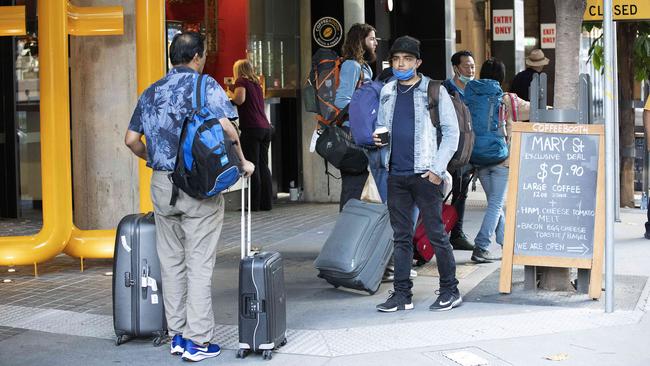
WA Premier Mark McGowan said Friday’s national cabinet meeting would be “interesting” after Scott Morrison said the increase of weekly international arrivals from 4000 to 6000 had been decided and was due to start next week.
His comments were made before any national cabinet agreement on how to accommodate the returned travellers.
“It’s a decision. It’s not a proposal,” the Prime Minister said.
“The commonwealth government has made a decision that those caps have been moved to those levels and planes will be able to fly to those ports carrying that many passengers a week.”
Under the Morrison government’s plan, announced by Deputy Prime Minister Michael McCormack on Wednesday, WA and Queensland’s hotel quarantine capacity would double to 1000 arrivals a week and NSW’s intake would increase from 2450 to 2950.
READ the full story here.
Rachel Baxendale 8.05pm: Vic health scramble to meet with multicultural leaders
Health authorities in Victoria have been holding urgent meetings with multicultural community leaders and local councils in Melbourne’s outer southeast, amid a coronavirus cluster in the Casey local government area which has been linked to 34 cases since Sunday.
The cluster, which is understood to be linked to multiple households, includes a number of unknown source cases.
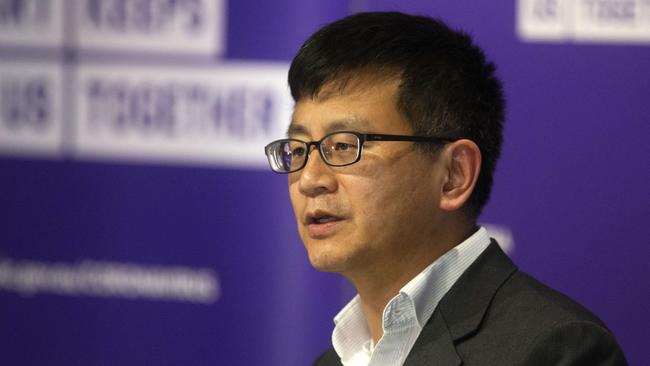
Deputy Chief Health Officer Allen Cheng said the Department of Health and Human Services had held a community meeting on Wednesday night, with three new pop-up testing clinics established in the suburbs of Clyde, Hallam and Noble Park.
Professor Cheng said some of the principles of a localised contact tracing approach being used in regional Victoria were being applied to the Casey cluster.
Asked on Monday whether there was a demographic trend among those in Casey with the virus, Chief Health Officer Brett Sutton said: “Yeah, there is. These are multicultural community members.”
“It’s not different to how it’s been for our second wave in large part, and again, this is linked to the high risk workplaces in lots of ways, so it’s a community that are a priority for engagement, they’re a priority for testing for us.
Read the full story here.
Olivia Caisley 7.35pm: ADF arrived to two nurses, 110 residents
Only two nurses were on duty to manage 110 residents at Melbourne’s Epping Gardens nursing home when Australian Defence Force personnel arrived to take control of the coronavirus-hit aged-care facility.
The ADF discovered no staff on the night shift were familiar with the nursing home or any of its residents, and concluded that controls to safeguard against the spread of COVID-19 were “problematic”.

ADF personnel, considered “the SAS of the medical world” by the Morrison government, were brought in to take control of the facility on July 27 after more than 70 residents were diagnosed with coronavirus. Another 22 staff members were infected with COVID-19 by that time.
“On arrival they received a handover from an enrolled nurse. At this time, no staff on the night shift were familiar with the facility or the residents,” the ADF said in response to a question on notice from the Senate inquiry scrutinising the federal government’s response to the pandemic.
“The staff were informed that 70 residents had tested positive to COVID-19 and the remaining 20 residents were symptomatic. It was apparent that infection control procedures were problematic, requiring remediation as a priority.” The centre has since been linked to 218 cases and 35 deaths, making Epping Gardens the nation’s worst-affected nursing home.
READ the full story here.
Rachel Baxendale 7.05pm: Andrews defends reclassifying of duplicate cases
Victorian Premier Daniel Andrews has defended his Department of Health and Human Services for its practice of reclassifying multiple coronavirus cases due to duplication on a daily basis.
Every day since June 27, at least one previously reported case has been reclassified, usually because DHHS had inadvertently reported a single case as two cases.
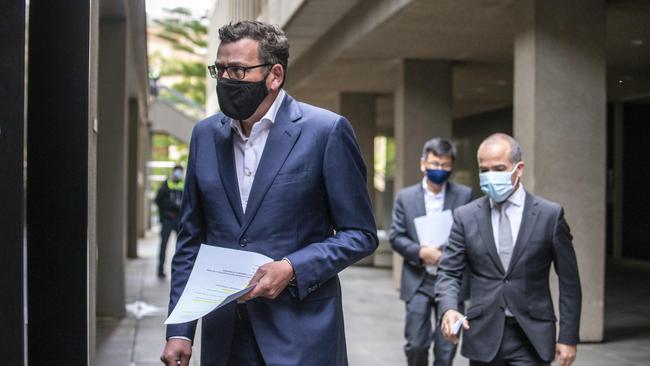
There have been 1391 cases reclassified during this time - more than Victoria’s entire current active caseload of 947.
Asked whether the prevalence of duplications is a sign that DHHS does not have a proper handle on the cases it is tracing, Mr Andrews said: “I don’t think it suggests that at all. I think it suggests that you’ve got many different inputs. You’ve got a large team, a large number of labs, many complex circumstances.”
“I think it’s indicative of a good degree of caution, always cleaning the data, always wanting to be rigorous, and I think that’s much better than not doing that, only to have numbers that you can actually rely upon,” he said.
“Where there’s reclassification needed, reclassification will be done.”
Asked why it was taking place daily, Mr Andrews said: “I don’t think it’s been every day. There are some days when there’s not been a need to do that. I think you will see that reduce dramatically as the numbers reduce.”
Premier @DanielAndrewsMP just said he wasn’t sure I was right about us having had reclassifications in every day’s figures recently. @migga has done the numbers: https://t.co/q1C9GKOHY9
— Rachel Baxendale (@rachelbaxendale) September 17, 2020
Independent data analyst Anthony Macali tweeted a table derived from DHHS data minutes later, which established reclassifications had taken place every day since June 27, with a total of 1391 cases removed during that time, largely due to duplication.
One case was reclassified due to duplication on Thursday. On Wednesday the number was 10.
DHHS has also reclassified five previously notified deaths due to duplication.
And 155 of Victoria’s 745 coronavirus deaths have been added to the tally days and in some cases weeks after the occurred, due to a belated “reconciliation” of aged care home, federal and state figures.
Rachel Baxendale 6.45pm: Andrews awaiting Sydney trip contact tracing report
Victorian Premier Daniel Andrews says he is still awaiting an official report from Australian Chief Scientist Alan Finkel regarding a trip to Sydney with ADF and Department of Health and Human Services staff to exchange coronavirus contact tracing expertise, but believes there were “no fantastic revelations on either side”.

The comments come despite stark ongoing differences between NSW and Victoria’s coronavirus reporting practices, and as analysis of how each state operated in the first fortnight of its second wave shows Victoria rapidly lost control, with low testing rates and dozens, then hundreds, then thousands of cases remaining under investigation for days.
Asked whether he had any update on the Sydney trip, which took place last Friday, Mr Andrews said he was yet to receive Professor Finkel’s report.
“But it’s my understanding that there were no fantastic revelations on either side,” he said.
“That makes sense, they’ve been talking often for months, but there’ll be some fine issues, I think probably at the margins.
“That’s at least the briefing I have at the moment. Professor Finkel will provide his report and we’ll look at that in detail.
“But we had officials that went as well because it was an exercise in sharing, and I think that there’ll be a few things we’ve learned, there’ll be a few things that NSW have learned as well, particularly, can I say, probably higher risk workplaces given we’ve had more of that challenge.
“There will be some things both ways, but there’s no 12 hours (of contact tracing time) found.”
Read more: State’s stubborn contact tracing fail
Joseph Lam 6.30pm: QLD awards early knock for pandemic students
Queensland state schools will being school holidays earlier than usual this year, awarding two student-free days in term four “in recognition of the outstanding efforts of school staff” during the pandemic.
In recognition of the outstanding efforts of school staff during #COVID19au, the last two days of the school year, Thur 10 and Fri 11 December, have been declared student free days. Schools will be closed on these days. View the updated school calendar at https://t.co/ny8rIKnexM. pic.twitter.com/N2yU5p16gw
— Queensland Department of Education (@QLDEducation) September 17, 2020
The Queensland Department of Education announced the ammended school calendar on Thursday, with the fourth school term running from Tuesday October 6 until Wednesday December 9 for public school students.
PDF: Updated Queensland state school calendar
Greg Sheridan 5.30pm: Pandemic sends China boom bust
Australia’s China boom is coming to an end. The shuddering crisis in Australia/China relations this week — the worst since the Tiananmen massacre of 1989 — bears one clear message: Beijing will not allow Australia to continue to grow rich from its relationship with China unless we conform our strategic and political personality to Beijing’s wishes.
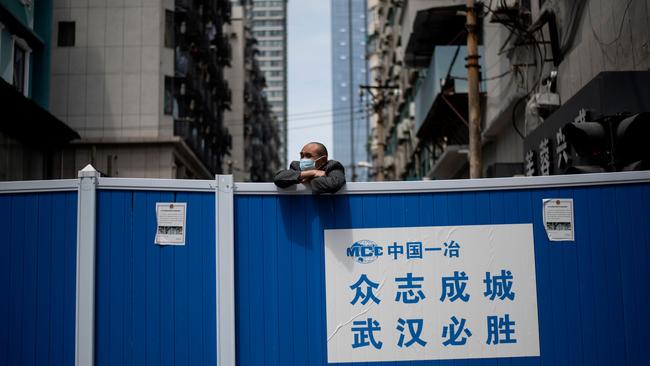
The Chinese government took its hostage diplomacy to a new level when it sent security forces to the homes of ABC correspondent Bill Birtles, in Beijing, and Financial Review correspondent Mike Smith, in Shanghai, to tell them they could not leave China and would face security questioning.
After a tense four-day stand-off, in which they took shelter in Australian diplomatic premises, both were eventually allowed to return to Australia.
Read Greg Sheridan’s full analysis here.
Remy Varga 5pm: Police suggested ADF to guard hotels
One of Victoria Police’s top officers said he suggested troops could play a role in the hotel quarantine program to the state’s Department of Premier and Cabinet.
An email from Deputy Commissioner Rick Nugent to Assistant Commissioners Michael Grainger and Shane Patton said it was agreed private security would be used in the hotel quarantine.
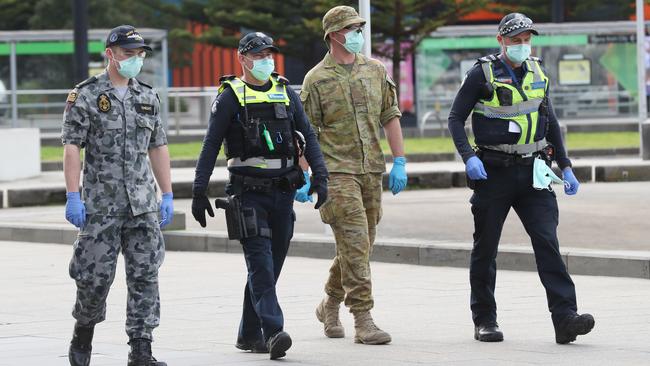
He said it was agreed at a meeting between department secretaries that CBD motels would be used to make it easier for Victoria Police to respond to any issues.
“DPC [Department of Premier and Cabinet] also rang me about this late. last night and confirmed that was the arrangement discussed,” he wrote in the March 28 email.
“I did suggest, if increased risks/issues were identified, ADF could have a role in this regard.”
READ the full story here.
Rachel Baxendale 4.05pm: Hotspot suburbs accumulate 25 more cases
Melbourne’s four local government areas with the highest active coronavirus caseloads have between them had 25 new cases added to their cumulative totals on Thursday, on a day when the entire state of Victoria recorded 28 new cases of coronavirus.
The net increase in Victoria’s total number of cases on Thursday is 27, due to the reclassification of a previously duplicated case.
However, other cases appear to have been removed from the tallies of some local government areas and added to those of others, with no explanation offered by the Department of Health and Human Services.
There have been a total of 36 cases added to the cumulative totals of some LGAs on Thursday, but a total of nine removed from others.
Wyndham, in Melbourne’s outer southwest, had seven new cases added to its total, but a net decrease of one active case to a total of 132 due to recoveries and/or deaths.
Brimbank, in Melbourne’s outer west, Casey in the outer southeast and Melton in the outer southeast each had six active cases added to their cumulative totals, although Casey was the only of these LGAs to record a net increase in active cases, rising by a single case to 79 active cases.
The six new cases in Casey on Thursday contribute to a total of 34 new cases in the LGA since Sunday.
Read more: Defence help ‘directly offered’ to Victoria
Olivia Caisley 3.40pm: PM accuses Qld of ‘playing politics’ on border claims
PM Scott Morrison has hit back at claims from Queensland Deputy Premier Steven Miles that he was trying to “tear down” Annastacia Palaszczuk, accusing the state of playing politics.
“There’s an election in Queensland and so political players are going to throw these insults around and mischaracterise what’s going on,” he said. “I’m not playing a role in the Queensland election. That’s for them to explain that sort of, you know, rhetoric. I don’t really want to buy into that.”
Mr Morrison said he had never said the Queensland border should be taken down but that it must be “managed sensibly and compassionately.”
“What I’ve said is it should be managed compassionately. What I’ve said is that they should explain to people what the rules for it are and the medical basis of it are,” he said.
Mr Morrison added that his move to lift arrival caps by 2000 to enable more Australians stranded overseas to return home was a decision: not a proposal.

“Well, the planes will land with people on them and they’ll be arriving. It’s a decision. It’s not a proposal,” he said. “The Commonwealth government has made a decision that those caps have been moved to those levels and planes will be able to fly to those ports carrying that many passengers a week.”
He also accused Labor of having no emissions plan for Australia, declaring there was “no excuse to go to the next election without a 2030 target”.
The Prime Minister said the Coalition was ‘very clear about our targets” and demanded Labor leader Anthony Albanese outline what the ALP’s emissions plan is.
“They can’t even tell us if they have a target for 2030,” Mr Morrison said after announcing a $1.9 billion investment in technologies to lower emissions on Thursday. “There’s no excuse to go to the next election without a target for 2030. We did it in 2013 for 2020, and we had a plan to achieve it and so if the Labor Party thinks that target should be different, they should say what it is and … how much they’re going to cost people or their jobs and their incomes.”
Mr Morrison also launched a defence of the Government’s plan to back a new gas-fired power plant in the Hunter Valley, declaring the technology is not old and had the “flexibility to deal with firming renewable energy”.
READ MORE: We’ll take good jobs news where we can get it
David Ross 3.20pm: Fresh outbreak at Keilor aged care home
A Melbourne aged care facility in Keilor Downs has experienced a renewed COVID-19 outbreak after shaking its last outbreak.
The outbreak at the Estia Health Keilor facility in Melbourne’s northwest has seen at least eight new cases after an elderly man shared his room with another resident after returning from hospital.
Four staff at the facility have been infected.
The aged care facility had recently stopped requiring its staff to wear full PPE, instead only requiring face shields and masks.
The outbreak comes weeks after the facility emailed family of guests on August 24 suggesting they make time to have a video, phone or “window visit with your loved one”.
It is understood that Stage Four restrictions in Melbourne do not allow for window visits except in rare cases.

Patient Experience Group CEO and aged care expert Ian Forbes said it was problematic that window visits had been suggested.
“We’ve seen examples where private operators have had great success in keeping their residents safe from the virus. Unfortunately, we have also seen great tragedy across the sector as well,” he said.
“Now is the time to focus on these patients and their experiences; we need to be not just saving lives, but improving them as well. The renewed focus on improving experiences of these residents will lead to an improvement in quality of life, improve outcomes and care, and improve health objectives across the industry.”
READ MORE: Qantas mystery tour over closed borders
Remy Varga 3.13pm: Victoria’s health noodle: ‘It’s quite normal to me‘
And incident controller has defended a convoluted command structure that underpins Victoria’s response to COVID-19 pandemic at today’s hotel quarantine inquiry in Melbourne.

Jason Helps, State Agency Commander from the Department of Health and Human Services, said it was an “off the shelf structure” that was “fit for an emergency” but admitted it was additionally complicated by factors such as quick external decision-making in state and national cabinet.
“I’d say in practice there were complications, I don’t know whether one’s physical structure on a piece of paper complements or makes something more complicated,” he said.
“I mean, that structure to me is — whilst it’s complicated, it’s quite a normal structure and understood by me.”
The command structure has since been simplified over the course of the pandemic, the inquiry heard, with the current trimmed down model in effect since May 12
READ the full story here
Richard Gluyas 3.05pm: No policy reason for digital currency: RBA
The Reserve Bank sees potential financial instability and no compelling policy reason to introduce a central bank digital currency, despite active consideration of the move by other countries such as Sweden, Canada and China.

The RBA also cast doubt over the future of so-called “stablecoins”, including the Facebook-sponsored Libra, which have emerged as a type of cryptocurrency designed to minimise price volatility to make them more attractive as a means of payment.
In a payments paper issued on Thursday, the central bank said it remained to be seen if Libra would “gain regulatory approval and become operational”.
The paper said that, unlike the precipitous decline of cash in Sweden, it was only falling gradually in Australia, with demand for banknotes not only increasing but rising significantly in the COVID-19 pandemic.
Also, advances like real-time payments through the new payments platform (NPP) meant that Australia compared favourably to other countries, with safe, convenient and low-cost payment services from commercial banks and other providers.
“The (RBA’s) view is that there is currently no strong public policy case to introduce a CBDC for retail use,” the paper concluded.
“Even though the use of cash for transactions is declining, cash is still widely available and accepted as a means of payment.
READ MORE: Your iPhone will look different
Rachel Baxendale 2.42pm: Half today’s Victorian cases from unknown sources
Of Victoria’s 28 new coronavirus cases on Thursday, 14 have so far been linked to known outbreaks, while the remaining 14 are under investigation.
The number of cases in Victoria since the pandemic began has increased by 27, due to one previously reported case being reclassified.
This follows 10 previously reported cases being reclassified due to duplication on Wednesday, and at least one reclassified case in every day’s figures in Victoria since June 27.
Four of eight of the deaths included in Thursday’s statistics occurred prior to Wednesday, but the Department of Health and Human Services has not disclosed when they occurred.
There have now been 155 deaths belatedly added to Victoria’s toll, some of which occurred weeks before they were reported.
Of the 155, 55 of these deaths have been added in small daily instalments since 53 deaths were added in a single day on September 4, when Victorian authorities failed to clearly explain why it had taken them weeks to reconcile state, federal and nursing home records after Victoria and the federal government agreed on how this should be done on August 12.
No explanation has been offered as to why deaths are still being belatedly reported more than five weeks later.

There are now 18,217 people who have recovered after testing positive for coronavirus in Victoria — an increase of 64 since Wednesday.
Of the 947 active cases in Victoria – down from a peak of 7880 active cases on August 11 – 907 are in residents of Melbourne, 33 are in people from regional Victoria, five are in people from interstate, and two are in people from unknown locations or under investigation.
Of the total 19,970 cases, 18,591 have been in people from metropolitan Melbourne, while 1201 have been in those from regional Victoria.
There have been 9523 cases in men and 10,433 in women.
The total number of cases in health workers increased by 6 to 3461 on Thursday, despite the number of active cases falling by nine to 143.
There are 464 active cases of coronavirus linked to 75 Victorian aged care facilities – 33 fewer than on Wednesday.
As of Thursday there have been 587 coronavirus deaths linked to aged care facilities in Victoria, including six of the eight deaths reported in the 24 hours to Thursday.
The 10 aged care outbreaks with the highest cumulative total numbers of cases as of Thursday and deaths as of September 8 (the most recent date for which data is available) are:
— 252 cases and 18 deaths linked to BaptCare Wyndham Lodge Community in Werribee, in Melbourne’s outer southwest (an increase of one case since Wednesday);
— 218 cases and 35 deaths linked to Epping Gardens Aged Care in Epping, in Melbourne’s north (decrease of one case since Wednesday, with no explanation offered);
— 215 cases and 44 deaths linked to St Basil’s Homes for the Aged in Fawkner, in Melbourne’s north (an increase of two cases since Wednesday);
— 166 cases and 17 deaths linked to Estia Aged Care Facility in Ardeer, in Melbourne’s west;
— 140 cases and 20 deaths linked to Kirkbrae Presbyterian Homes in Kilsyth, in Melbourne’s outer east (an increase of one case since Wednesday);
— 130 cases and 11 deaths linked to BlueCross Ruckers Hill Aged Care Facility in Northcote, in Melbourne’s inner north;
— 128 cases and 20 deaths linked to Twin Parks Aged Care in Reservoir, in Melbourne’s north (an increase of one case since Wednesday);
— 124 cases and eight deaths linked to Cumberland Manor Aged Care Facility in Sunshine North, in Melbourne’s west;
— 120 cases and 17 deaths linked to Japara Goonawarra Aged Care Facility in Sunbury, in Melbourne’s outer northwest;
— 119 cases and 10 deaths linked to Estia Aged Care Facility in Heidelberg, in Melbourne’s northeast.
Non-aged care outbreaks with the highest numbers of active cases include:
— 33 active cases linked to an outbreak in the Casey community in Melbourne’s outer southeast (total cases: 34). The total number of cases in the Casey LGA on Thursday is 79.
— 13 active cases linked to Footscray Hospital in Melbourne’s inner west, up from 12 on Wednesday (total cases: 15, up from 13 on Wednesday);
— Eight active cases linked to Bulla Dairy Foods in Colac in southwest regional Victoria, down from 10 on Wednesday (total cases: 20);
— Nine active cases linked to Vawdrey Australia Truck Manufacturer in Dandenong South in Melbourne’s outer southeast – the same number as Wednesday (total cases: 64);
— Six active cases linked to Wydinia Kindergarten in Colac, down from eight on Wednesday (total cases: 16);
— Five active cases linked to Dandenong Police Station – the same number as Wednesday (total cases: 16, up from 15 on Wednesday).
DHHS is also investigating cases linked to the following settings:
– An undisclosed ward at The Alfred hospital in Melbourne’s inner southeast;
– A new case linked to Uniting AgeWell Camberwell Community Condare Court aged care facility in Melbourne’s east.
READ MORE: State's stubborn contact tracing fail
Courtney Walsh 2.01pm: McLachlan confident of AFL return to MCG in 2021
AFL chief executive Gillon McLachlan is confident football will be back at the MCG by next March for the beginning of the 2021 AFL season.
The league boss, who is Queensland for the remainder of the relocated season, is optimistic crowds will be able to attend matches in Victoria next year, provided the health outlook in the state continues to improve.
“I am optimistic and I think I am confident that it will be Round 1 next year. What I have learnt is not to get ahead of ourselves and to be putting asterisks on things and I think that has stood us in good stead,” he said.
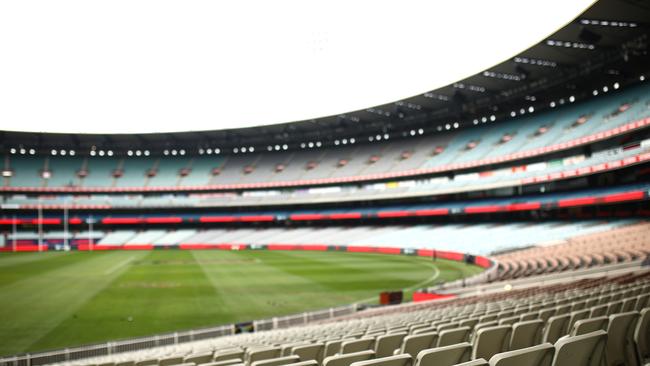
“Victorians, I know, are missing their football. Clubs and players are missing being there. And we need to be playing footy at the MCG at some point and I am confident it will be Round 1 but there are obviously things to happen before then.
“The Victorian government, others will work through that. I am speculating. I see the numbers. I know the plans. I know the appetite for people in Victoria, who are making decisions, for life to get back to normal. If the numbers get down, we can do that.
“Sport, major events, hospitality, it is such a big part of Melbourne and I know the Government and everyone in the community is keen to get back to normal and get back to the MCG.”
The AFL has received briefings from governments across Australia throughout a season that sees 16 AFL clubs currently based in Queensland.
He said the AFL had spent an estimated $60 million in terms of relocating the competition’s clubs, with the majority of that in Queensland.
The AFL has spent more than $5 million on COVID-19 tests for players, staff and officials. More than 51,000 tests have been completed on AFL-affiliated personnel this season to date, with six weeks of the competition to go.
READ MORE: Queensland’s league pain is AFL’s gain
PATRICK COMMINS 1.50pm: ‘Closed borders an ongoing threat to jobs’: Frydenberg
Josh Frydenberg has said today’s upbeat labour force figures showed the economy was “fighting back against the virus”, and that they were a testament to the country’s “remarkable resilience” in the face of the pandemic.
Speaking in Canberra this afternoon, the Treasurer said his department estimates that the “effective” jobless rate — which includes those not classified as unemployed but working zero hours for economic reasons — fell to 9.3 per cent in August from 9.8 per cent in July.
This compares to the 6.8 per cent rate as revealed by the ABS this morning.
But Mr Frydenberg warned the jobless rate would climb again in the months ahead, and that the numbers couldn’t overshadow how many Australians were “doing it tough” amid the worst downturn in living memory.
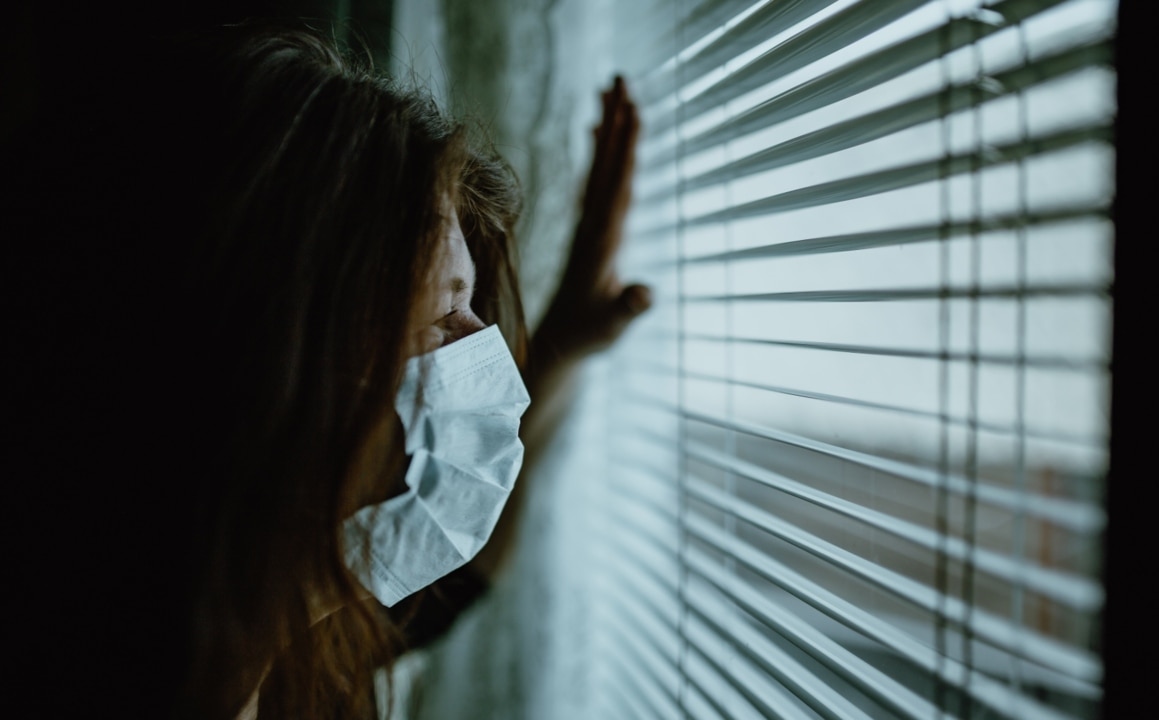
Employment lifted in all states and territories except for Victoria, which shed 42,400 jobs in the month as Melbourne’s lockdown from the start of August and the stricter measures across the rest of the state forced business to close. The Victorian unemployment rate climbed to 7.1 per cent from 6.8 per cent in July.
Treasury’s effective unemployment rate in Victoria jumped to 13.1 per cent, from 10.5 per cent, Mr Frydenberg said.
In contrast, the number of employed climbed by 51,500 in NSW, and by 32,200 in Western Australia.
Western Australia and Queensland – which have been heavily criticised by the Morrison government for their border closures – showed the biggest falls in their respective unemployment rates in August, both down 1.3 percentage points to 7 per cent and 7.5 per cent.
But Mr Frydenberg said NSW, where the jobless rate fell to 6.7 per cent from 7.2 per cent, remained “a standout in terms of its performance, both in managing the virus and also keeping its economy open”.
“What we do know is that closed borders cost jobs and we have been very outspoken about the human impact too,” he said.
Rebecca Le May 1.44pm: More execs pocketing bonuses as staff on JobKeeper
Dozens of high-paid company executives are still pocketing bonuses while holding their hands out for JobKeeper payments, prompting calls from other prominent businesspeople to clean up their act.
Multiple earnings reports for 2019-20 show many in top-tier management still received cash and share bonuses despite their firms being granted the taxpayer-funded wage subsidies.
Among the most notable was Daniel Agostinelli, chief executive of footwear company Accent Group, who was paid a $1.2 million cash bonus, while chief financial officer Matthew Durbin got $421,500 – both more than they received the previous financial year.
The company was handed almost $24 million in government wage subsidies and said – despite sales recovering strongly in May and June – it did not expect to apply for JobKeeper “from September”.
Matt Bekier, chief executive of Star Entertainment Group, got 40 per cent of what he would have been paid if the Star Casino operator’s targets had been met, but that still amounted to almost $830,000 in short-term incentive deferred equity.
The company received about $64.8 million from the Federal Government between April and June.
Construction giant Lendlease also reduced deferred equity awards to executives after obtaining total government support globally of $15 million, including $7 million in Australia, assistance it described as “modest”.
Andrew Barkla, managing director of IDP Education, which was granted $4.46 million in wage subsidies, achieved 65 per cent of his STI target and pocketed more than $683,000.
The company noted the pandemic had adversely affected shareholders but said executives had also suffered by being rewarded less than usual.
“After deep contemplation, the board believes that no ‘special’ adjustment is required to these reward outcomes and that the results fairly reflect remuneration and performance outcomes, all things considered,” it said.

Former Dow Chemical chief executive Andrew Liveris was asked about the pandemic payouts after a wide-ranging address to the National Press Club on Wednesday and said it was a topic he was passionate about, believing corporate ethics had to change.
“I’m on the record in the US for saying this – and my peers hated me – that CEOs get paid too much,” he said.
“I am on record for saying we should pay more taxes, and I am on record for saying we should be giving back rather than taking.”
Mr Liveris recounted a speech he gave at a business school a few years ago when one “brave soul” said he was going into manufacturing, while everyone else said they were heading for Wall Street.
“I think we have completely screwed up the financial model,” he said.
“When have we given licence to the people who manage money, to make money more than the people who invent and actually deliver the product?
“So the middle man and the ethics of money has overwhelmed the ethics of running institutions to standards and values that we all would want: respect, responsibility, fairness, equity.
“We need to fix it.”
His comments come after Business Council of Australia chief executive Jennifer Westacott recently told ABC’s Insiders program she believed companies should not be paying executive bonuses if they were receiving JobKeeper.
“It wasn’t designed for that,” she said.
“It was designed to keep people working.
“If I were those companies, I would exercise some very careful judgment.”
READ MORE: Durie — Executive bonuses tarnish JobKeeper
Jade Gailberger 1.24pm: Cost of coronavirus support revealed
More than $100 billion has been splashed in fiscal support measures during the coronavirus pandemic.
Treasury officials told a Senate committee on Thursday that at least 55 per cent of the $179 billion committed by the Federal Government has already been spent.
Almost $55 billion in JobKeeper wage subsidy payments have been outlaid to date.
Welfare recipients have also received a share of $12.3 billion in coronavirus supplement payments.

Treasury spokesman Luke Yeaman said tapering of the JobSeeker payment from September 28 would take some money out of the economy.
“That is undisputed,” he said.
In Victoria, stage three restrictions was expected to lower GDP growth by 0.75 per cent in the September quarter.
But the tough stage four lockdown introduced in August was expected to slash the fall in growth by a combined 2.5 per cent.
Treasury estimates this will wipe between $10-12 billion from the economy.
Mr Yeaman said the extension of restrictions in Victoria and slower path out of the lockdown was expected to effect the December quarter.
He said this would “hold back” the economic recovery a “little longer”.
—NCA Newswire
READ MORE: Employers brawl over IR changes
David Rogers 1.14pm: JobKeeper roll-off still a risk to jobs figures
Australia’s employment growth remains at risk from lessening fiscal support after the stronger-than-expect August jobs data, according to Westpac.
“Without a doubt, the recovery in the rest of the country has been more robust so far than we thought while the hit to the Victorian labour market has not as bad as expected,” says Westpac senior economist, Justin Smirk.

“However, with the rolling off, or adjustment of many of support packages, in particular JobKeeper between now and the end of the year there is meaningful risk to employment.
Westpac still sees unemployment peaking at 7.8pc in December after a surprising fall to 6.8pc in August.
Mr Smirk notes that the shutdown in Victoria did hit that state with employment falling 42,000 and the unemployment rate lifting 0.3 percentage points to 7.1pc.
After peaking at 51,900 or 1.6 per cent growth in July from May, Victoria’s employment is now just 9,500 or 0.3pc higher than the May low.
READ MORE: Westfield owners tap markets for $19bn
Olivia Caisley 12.40pm: Women, young people big winners in new jobs
Josh Frydenberg is addressing the latest job figures at a press conference in Canberra.
He says 111,000 jobs were created in the month of August and the unemployment rate fell from 7.5 to 6.8 per cent, which is “significantly better than market expectations.”
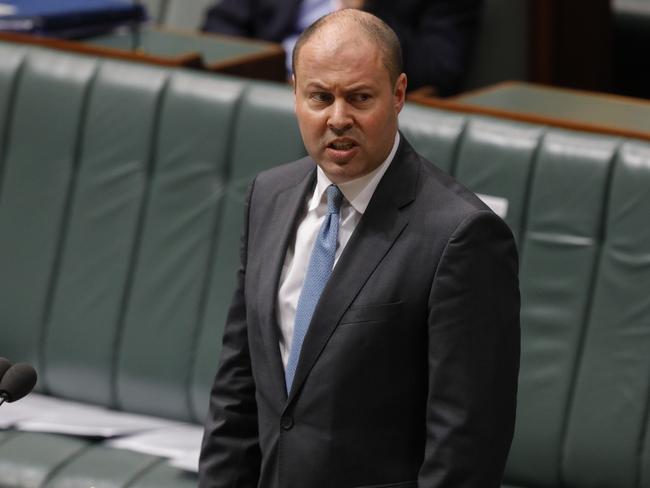
The Treasurer says 458,000 new jobs have been created over the past three weeks with a particularly strong performance seen in NSW.
“Those 458,000 new jobs, 60 per cent of those jobs have gone to women and 40 per cent have gone to young people,” he says. “We recognise that despite this fall today, in Australia’s official unemployment rate, many Australians are doing it tough and the road to recovery will be long, it will be hard, and it will be bumpy.”
READ MORE: NZ economy shrinks by record 12.2%
Mackenzie Scott 12.15pm: Threat to kill Palaszczuk: Man held
A Queensland man has been arrested after allegedly threatening to kill premier Annastacia Palaszczuk and chief health officer Jeannette Young.
The 43-year-old man was arrested by detectives on Wednesday night at his Nerang home on the Gold Coast.
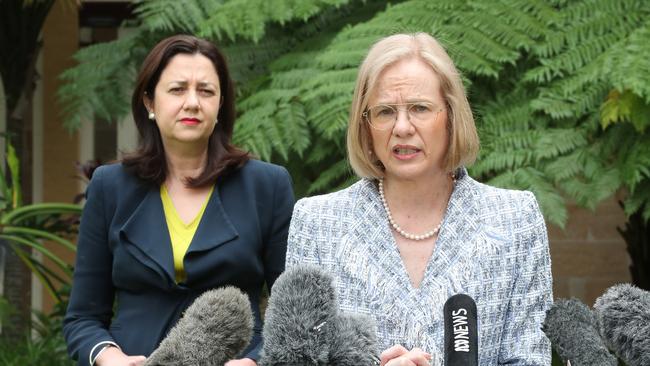
He will appear in the Southport Magistrates Court on October 7 charged with one count of using a carriage service to make a threat to kill.
It was revealed on Monday that Dr Young is under police guard as criticism of the state’s handling of the pandemic continues.
Earlier this week, the longstanding health official said the past eight months have taken a personal toll, as it has all Queenslanders.
“It has taken an enormous toll on me but then this has taken an enormous toll on every single person in our community,” Dr Young said.
“We can’t see a clear end to this so we’re going to have to work this through together. I think this has been tough on everyone.”
READ MORE: Mental health grant aimed at the young
Remy Varga 12.12pm: Quarantine chief ‘unaware’ of troops offer
A top bureaucrat who oversaw the co-ordination of Victoria’s hotel quarantine program says he wasn’t aware Australian Defence Force troops were offered, despite both the Prime Minister and the state Premier announcing their involvement at the time, inquiry hears.
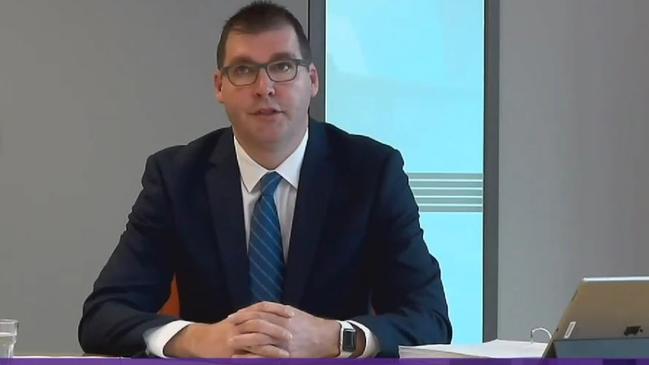
State Agency Commander from the Department of Health and Human Services Jason Helps told the hotel quarantine inquiry on Thursday that ADF support wasn’t offered in the days leading to the standing up of the bungled regimen that sparked Victoria’s second wave.
Under cross examination by counsel assisting Ben Ihle, Mr Helps said he wasn’t aware that both Prime Minister Scott Morrison and Daniel Andrews said the ADF would be involved when announcing the program on March 27.
“We were scrambling pretty quickly and didn’t have benefit watching the entire press conference,” he said. “We subsequently became aware but was not aware at the time.”
READ the full story here
Olivia Caisley 12.01pm: $1.9bn emissions investment to create jobs: PM
Scott Morrison says his government’s $1.9 billion investment in technologies to lower emissions will create jobs, cut costs for households and improve the reliability of the nation’s energy supply.
The Prime Minister said the Commonwealth was backing the next generation of energy technologies through an additional $1.62 billion in funding for the Australian Renewable Energy Agency (ARENA) to invest.
He said ARENA and the Clean Energy Finance Corporation (CEFC) would also be expanded to back new technologies that will cut emissions in agriculture, manufacturing, industry and transport.
“Our JobMaker plan is about protecting and creating the jobs of today and positioning Australia for the jobs of the future, which is why our investment in new technologies is so crucial,” he said.
“Australia is in the midst of a world-leading boom in renewable energy with over $30 billion invested since 2017. Solar panels and wind farms are now clearly commercially viable and have graduated from the need for government subsidies and the market has stepped up to invest.
“The Government will now focus its efforts on the next challenge: unlocking new technologies across the economy to help drive down costs, create jobs, improve reliability and reduce emissions. This will support our traditional industries – manufacturing, agriculture, transport – while positioning our economy for the future.”
READ MORE: Canberra ‘at fault’ for power delays
Patrick Commins 11.36am: Figures shock as 111,000 jobs added
Australia’s unemployment rate has plunged to 6.8 per cent in August from 7.5 per cent in the month before as the economy added another 111,000 jobs in the month despite the drag from Victoria’s second wave.
There was a 36,200 increase in the number of full-time workers, and a 74,800 rise in part-time jobs, the seasonally adjusted figures from the Australian Bureau of Statistics showed.
In Victoria, the jobless rate lifted to 7.1 per cent in August, from 6.8 per cent, alongside a 42,400 fall in the number of unemployed. But this drop was more than offset by gains across the rest of the country, the ABS said.
The number of employed Australians by 366,700 in June and July – and despite the August rise is still shy of the 872,000 plunge in employment triggered by the shutdowns in April and May.
The labour force participation rate lifted 0.1 percentage points to 64.8 per cent.
The underemployment rate — those who were working some hours but said they wanted to work more — was steady at 11.2 per cent in July.
Treasury forecasts the jobless rate to approach 10 per cent by the end of the year, and that the unemployment measure will remain above pre-COVID levels for years.
The number of Australians without work but looking for jobs passed 1 million people for the first time in July. Unemployment is running at its highest rate since the late 1990s, but still well below the 11.2 per cent peak experienced during the recession earlier that decade.
READ MORE: Trading Day — ASX opens lower after iron ore price sinks
YONI BASHAN 11.16am: Stadiums get green light to lift capacity
Major stadiums in NSW will be permitted to lift their capacity to 50 per cent for large, one-off events, but spectators will have to wear masks when moving to or from their seats.
Premier Gladys Berejiklian said once people were seated they would be permitted to remove their masks.
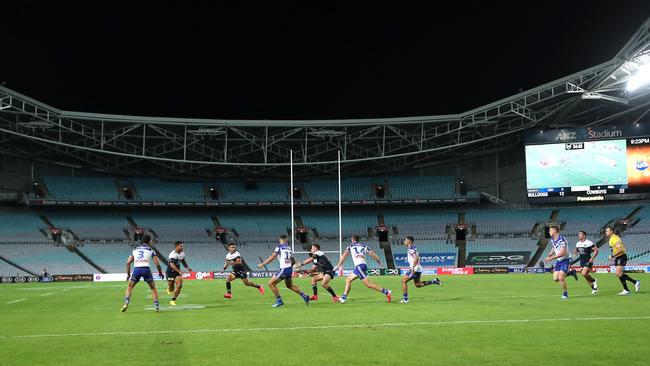
Stadiums, currently able to fill 25 per cent of their seating capacity, will have to continue to abide by a strict four-square metre rule to enforce physical distancing controls.
“A large venue, so long as it has tickets, seats and zones, and very specific caveats, is able to (hold) managed and controlled events,” Ms Berejiklian said.
Tourism Minister Stuart Ayres said, under the eased restrictions, Bankwest Stadium will be able to hold 15,000 people; the Sydney Cricket Ground will be able to hold 23,000 people, and ANZ stadium will lift its capacity up to 40,000 people.
READ MORE: Fears grow over cricket’s horror summer schedule
David Ross 11.09am: NSW records five new virus cases
Five new cases of COVID-19 have been diagnosed in NSW taking the state’s total to 4001.
Two of the new cases were overseas travellers in hotel quarantine, two were locally acquired and linked to a known cluster and one is unknown in a development that may push out the further reopening of South Australian borders to NSW.
Of the known cluster cases, one is a healthcare worker who forms another infection in the growing Concord emergency department cluster. The case was in isolation while infectious.
The Concord and Liverpool hospital clusters have now claimed 21 infections of which eight were staff.
Five new cases of #COVID19 were diagnosed in the 24 hours to 8pm last night.
— NSW Health (@NSWHealth) September 17, 2020
Of the five new cases:
- 2 are returned overseas travellers in hotel quarantine
- 2 are locally acquired and linked to a known case or cluster
- 1 is locally acquired and under investigation pic.twitter.com/LFzxv6P8A8
Another of the known cases attended the Easter Suburbs Legion Club in Waverly and were in isolation while infectious. There are now nine cases from that cluster which was parked after the club was visited on two days by two men who were infectious.
The locally acquired case is under investigation and is from the Murrumbidgee local health district in NSW’s south.
The case has subsequently tested negative and NSW is taking a cautious approach to ask the cases’ contacts to remain in isolation while further testing is done.
NSW Health asks anyone who attended the Five Stars Thaitanic, Casula on Saturday 12 September from 4.20pm-5.20pm to monitor for symptoms and get tested immediately if they develop. After testing, they must remain in isolation until a negative test result is received.
NSW Health is urging anyone who feels unwell to get tested after earlier this week raising the issue of declining tests.
STEPHEN LUNN 11.02am: Aged Care commission to release pandemic report
The aged care royal commission will release a special report on the COVID-19 pandemic later this month.
Commissioner Tony Pagone announced the new report would be presented to government on September 30.
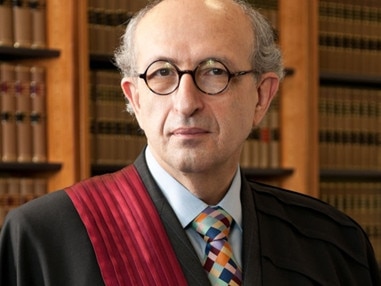
“The special report … will contain specific recommendations from us to expedite and facilitate the implementation of comprehensive measures to protect older Australians during this time,” Mr Pagone said.
In a special session of the commission in August, counsel assisting Peter Rozen heavily criticised the federal government, which is responsible for aged care funding and regulation, over its handling of nursing homes during the pandemic.
Mr Rozen said the Morrison government had no specific plan for managing the pandemic response in aged care settings, and had displayed “a degree of self-congratulation and even hubris” about the sector’s handling of coronavirus in the lead-up to Victoria’s second wave.
More than 600 nursing home residents have died of coronavirus in Australia to date.
READ MORE: Aged care ‘needs special tax levy’
Rachel Baxendale 10.42am: New Victorian milestone as fewer than 100 in hospital
Victoria’s 28 new coronavirus cases on Thursday have taken the number of cases since the pandemic began to 19,970.
Eight deaths reported in the 24 hours to Thursday have brought the state’s coronavirus death toll to 745.
They include the deaths of a man in his 60s, two men in their 80s, and two men and three women in their 90s.
Six of the eight deaths have been linked to aged care, bringing the total coronavirus death toll linked to aged care facilities in Victoria to 587.
There are 97 people in Victorian hospitals with coronavirus on Thursday, including 12 in intensive care, of whom six are on ventilators.
This compares with 107 in hospital on Wednesday, including 11 in intensive care, of whom six were on ventilators.
Thursday is the first day with fewer than 100 people in Victorian hospitals with coronavirus since July 14, and comes after a peak of 675 in hospital on August 19.
Thursday’s 28 new cases come after 14,247 tests were processed in the 24 hours to Thursday, bringing the total processed in Victoria since the pandemic began to 2,535,134 tests.
The positive test rate for Thursday is 0.20 per cent – the lowest positive test rate since June.
The 14,247 tests processed in Victoria in the 24 hours to Thursday compare with 20,411 processed over the same period in NSW.
There are 941 known active cases of coronavirus in Victoria on Thursday – a decrease of 50 since Wednesday.
There are 143 active cases in health workers, down from 152 on Wednesday. This number includes aged care workers.
There are 464 active cases linked to aged care facilities in Victoria on Thursday, across 75 aged care homes.
This compares with 497 active cases in aged care on Wednesday.
The number of active cases linked to residential disability accommodation is now two, down from six on Wednesday. Both of these cases are in staff.
The number of active cases in regional Victoria is now 33, down from 37 on Wednesday.
READ MORE: Bonuses for execs as staff go on JobKeeper
Robyn Ironside 10.08am: Qantas mystery tour to soar over closed borders
Qantas has found a way around state border closures to fulfil the travel experience many have been longing for during the pandemic.
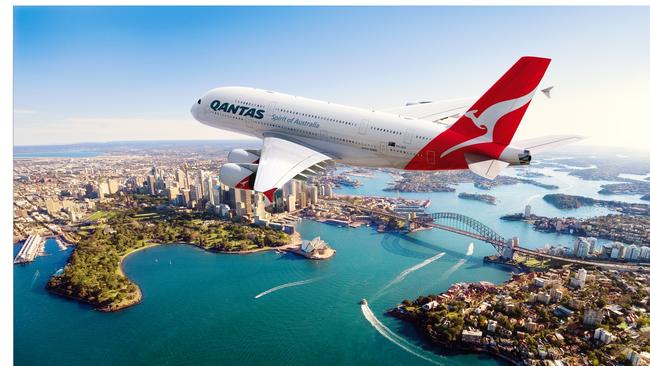
“So many of our frequent flyers are used to being on a plane every other week and have been telling us they miss the experience of flying as much as the destinations themselves,” said Qantas CEO Alan Joyce.
Tickets will go on sale today.
READ the full story here
Sarah Elks 10.00am: ‘Clear why PM’s singling out Queensland’: Deputy Premier
Queensland Deputy Premier Steven Miles has accused Prime Minister Scott Morrison of “concocting” a deliberate strategy to attack Premier Annastacia Palaszczuk over the state’s borders to “bring down” the Labor government.
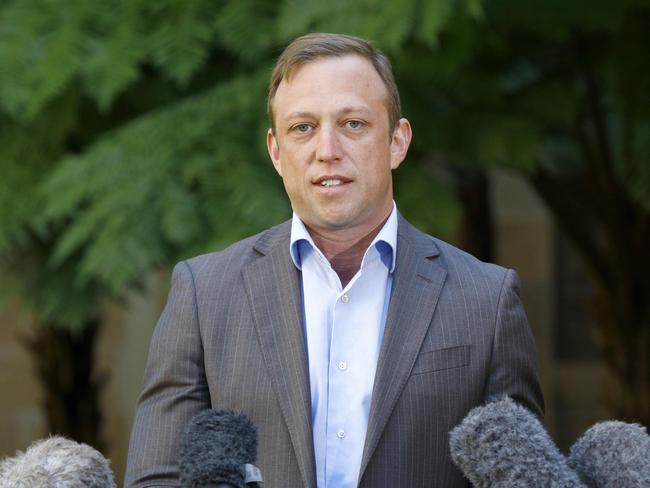
Queenslanders go to the polls on October 31, and Mr Morrison and his Queensland LNP colleagues have repeatedly criticised Ms Palaszczuk over the state’s border policy.
Mr Miles said it was clear why Mr Morrison and the LNP were singling out Queensland, even though most states had border restrictions in place.
“Some in the LNP have disclosed what their strategy is, they’re determined to bring us and their government down, that’s why they’re focused on Queensland,” he said.
“There are restrictions in place in pretty much every state.”
“Why Scott Morrison is so fixated on Queensland, so determined to tear down our Premier …(is a) deliberate strategy concocted in the Prime Minister’s office.”
Mr Miles said the strategy was carried out by Mr Morrison, federal Home Affairs minister Peter Dutton and “carried out” by Ms Frecklington and the Queensland LNP.
Queensland will review its border policy at the end of the month, Mr Miles. He indicated careful consideration would be given to reopening to the ACT, given it hasn’t had a new case of COVID-19 for more than 60 days. But he acknowledged it would be challenging given the ACT is “enveloped” in NSW, which is considered a hot spot.
Queensland will reopen borders when there is “28 days of no transmission in the community out of quarantine (that) is what we’d be looking for,” Mr Miles said.
“We want to see those borders opened up just as soon as it’s safe to do so,” Mr Miles said.
“We’ll look at the feasibility of the ACT, given their long period of no (community) transmission”
Meanwhile, Queensland has recorded one new case of COVID-19 overnight, a health worker in his 60s who was a known contact of a previous case.
Mr Miles — speaking outside the Townsville hospital in north Queensland — said the man was already in quarantine, and there was no risk of community transmission from the new case.
Queensland now has 27 active cases.
READ MORE: OECD gloomy on economic rebound
Rachel Baxendale 9.57am: How Victoria, NSW differed in dealing with clusters
Every morning at 11 sharp, NSW Health sends out its daily coronavirus press release, detailing each new case, including the cluster to which it’s been linked, and any locations associated with it.
South of the Murray, Victoria’s Department of Health and Human Services is still doing things differently, more than a month after the peak of a second wave of infections which has killed 718 people, compared with three deaths in NSW over the same period.
Premier Daniel Andrews proclaimed last week that a contingent from Victoria including DHHS and Australian Defence Force personnel and the nation’s Chief Scientist Alan Finkel was only travelling to Sydney to “double and triple check” whether the southern state’s contact tracing protocol was up to scratch.
But any close examination of each state’s case data in the early days of their second waves of coronavirus cases indicates the stark difference in their cumulative case numbers (4185 compared with 19,943) is no accident.
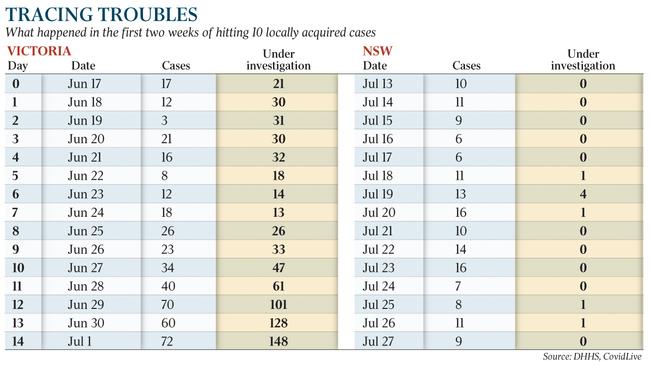
This is despite NSW’s second wave comprising six separate “index” cases of community transmission — all genomically linked to Victoria — compared with at least 99 per cent of Victoria’s second wave being genomically linked to breaches at two quarantine hotels.
READ the full story here
David Rogers 9.47am: All eyes on jobs data with fall expected
Australia’s share market is expected to fall marginally and may have downside risk after the US share market reversed intraday gains after Fed Chair Jay Powell highlighted the economic risk from a lack of new fiscal stimulus.
US August retail sales disappointed with a 0.6pc rise versus 1pc expected and a downward revision to July.
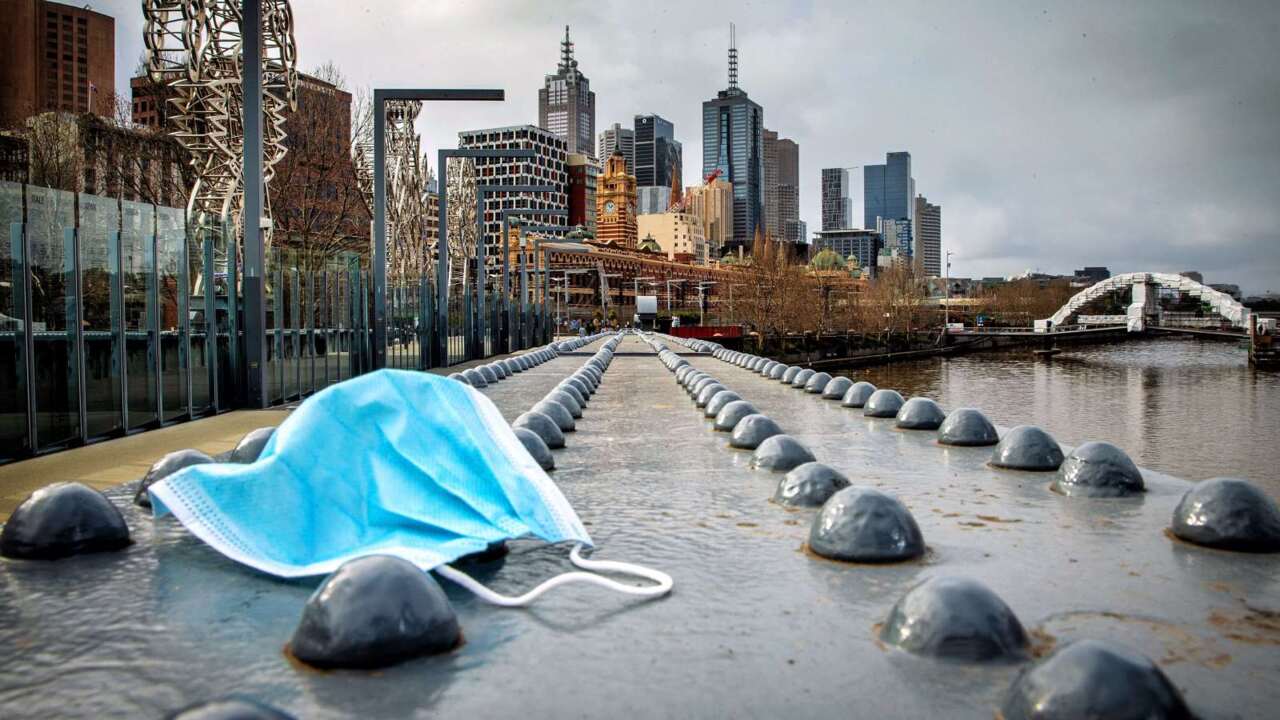
Focus turns to Australia’s August employment data at 1130am, with economists expecting a 35,000 fall in jobs and 7.7pc unemployment rate.
READ MORE: Trading Day — ASX to slip at open
Rachel Baxendale 9.40am: Andrews to address media at 10.30am
Victorian Premier Daniel Andrews is due to address the media at 10.30am, alongside Deputy Premier and Education Minister James Merlino.
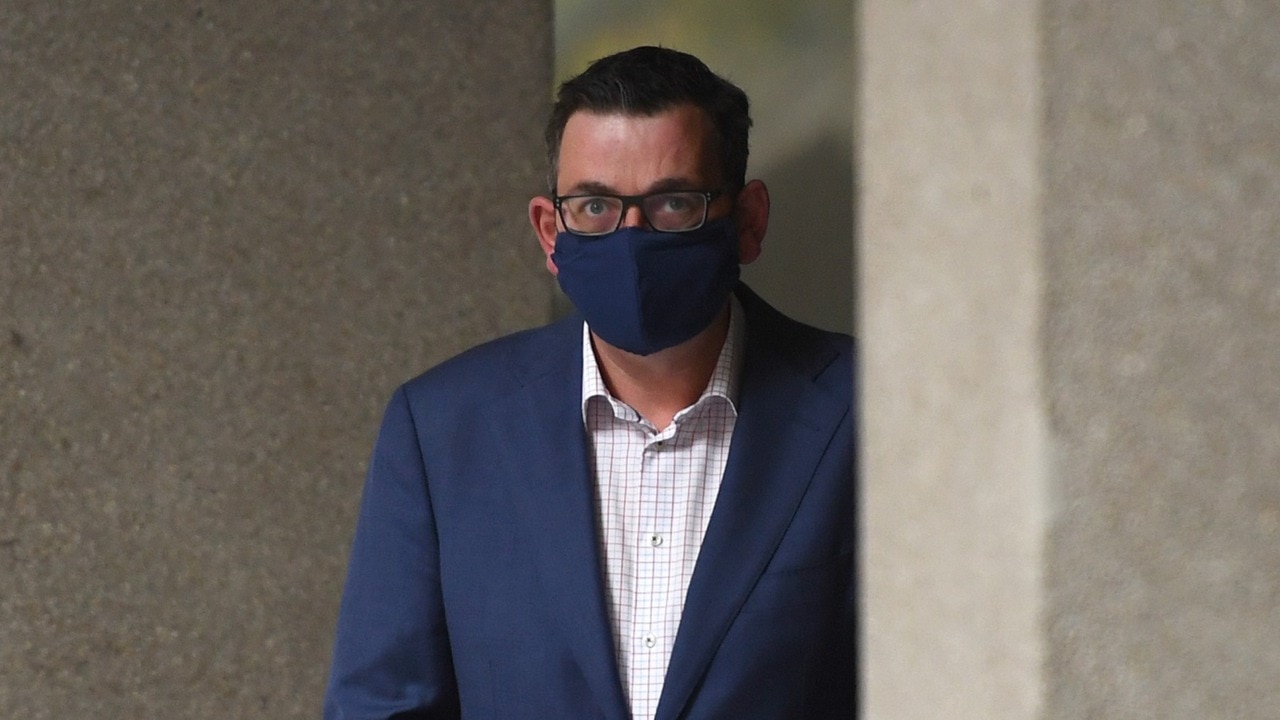
The press conference comes as the lower house of state parliament is due to sit this morning, with Question Time due at 12pm.
READ MORE: Trump slaps down ‘confused’ health chief
David Ross 9.32am: ‘Labor pressure not behind arrival cap lift’
Deputy Prime Minister Michael McCormack says moves to lift arrival caps have been weeks in the works and not a result of political pressure from Labor.
“At the national cabinet process it has been discussed ad nauseam,” he said.
“We did encourage and implore Australians to come home back in March,” Mr McCormack told Sky News. “Many availed themselves of doing so. The only way we can get them home is by lifting the quarantine caps.”
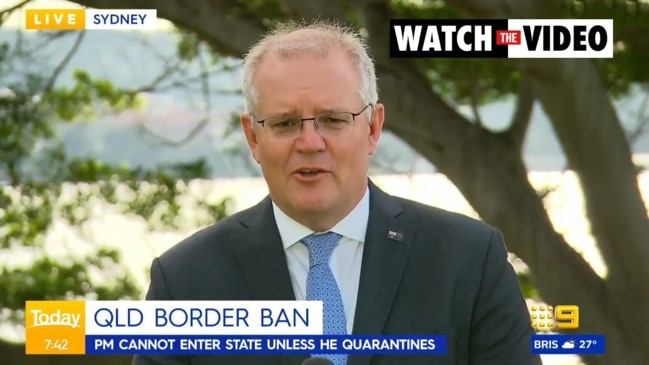
Mr McCormack said he hoped flights could resume to Victoria but only when deemed appropriate by medical experts.
“We will make sure we follow that best advice, yes, Victoria is still in that lockdown situation,” he said.
The Transport Minister said he had been in discussion with Qantas around stepping up flights to return Australians from overseas and interstate.
“We want to see as many people in the aviation industry back at work,” he said.
READ MORE: Korporaal — Super at the crossroads
OLIVIA CAISLEY 9.04am: ‘Common sense to use RAAF jets’: Albanese
Labor leader Anthony Albanese has again urged the commonwealth to deploy Royal Australian Air Force jets usually reserved for VIPs to rescue thousands of Australians stranded overseas due to the coronavirus pandemic.
Mr Albanese told radio station 6PR it was “common sense” to use all the assets at Australia’s disposal such as army bases, detention centres and hotels to ensure stranded Aussies could get home and complete the required two weeks in quarantine.
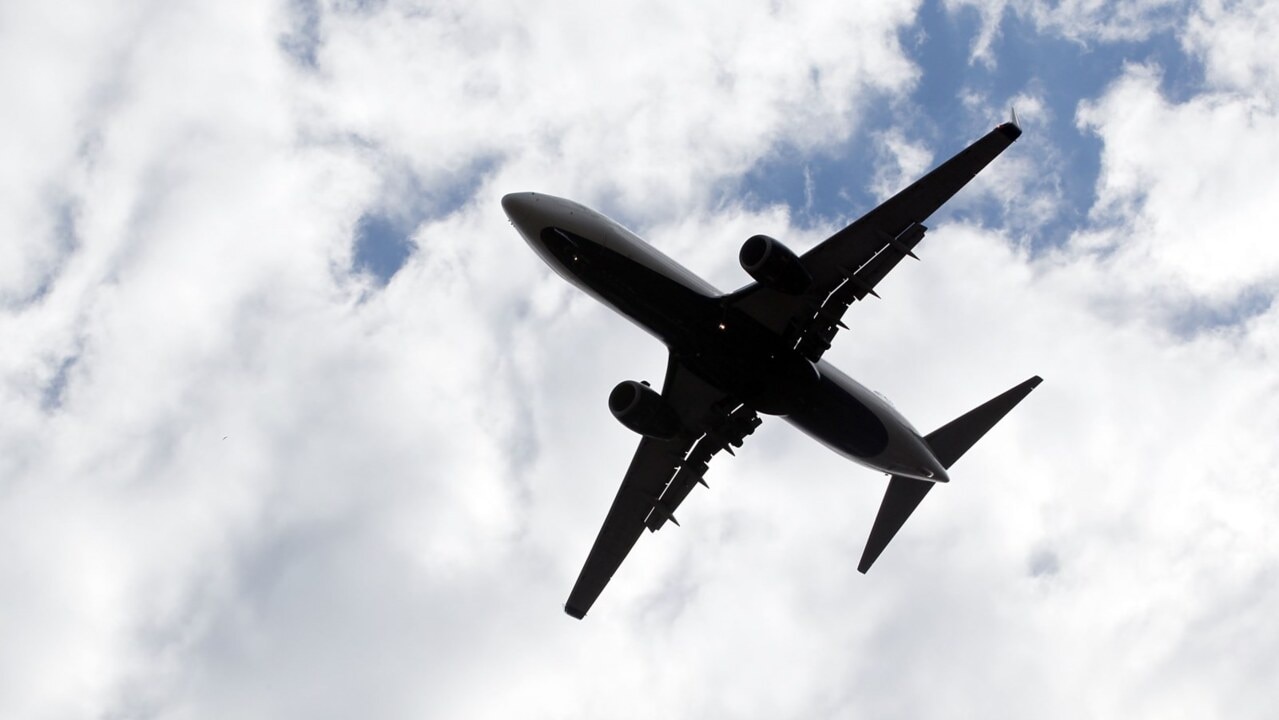
“It seems to me that common sense tells you we should use all assets at our disposal, whether they be private or public assets,” he said. “We should be doing what we can to get people home.”
Asked whether he supported WA Premier Mark McGowan’s calls to use detention centres such as Christmas Island to house those quarantining, Mr Albanese said there was no reason not to.
“It’s unacceptable that a young mum with a one-year-old kid gets told by authorities, ‘Oh, just go stay in a homeless shelter because we can’t get you home and you haven’t got any money or accommodation to be able to stay in London’,” Mr Albanese said.
READ MORE: Albanese wavers on climate policy
Stephen Wright 8.55am: NZ economy contracts by record 12.2pc
New Zealand’s economy suffered a record contraction in the second quarter as a lockdown to halt the spread of the coronavirus kept people at home and shuttered most businesses.
Gross domestic product shrank by 12.2 per cent in the April-June quarter from the previous quarter, Statistics New Zealand said Thursday. The economy was 12.4 per cent smaller compared with a year earlier.
The New Zealand decline was worse than an estimated 9.8 per cent drop in combined GDP for OECD developed nations in the same period and a 7.0 per cent fall for neighbour Australia, which imposed a less strict lockdown.
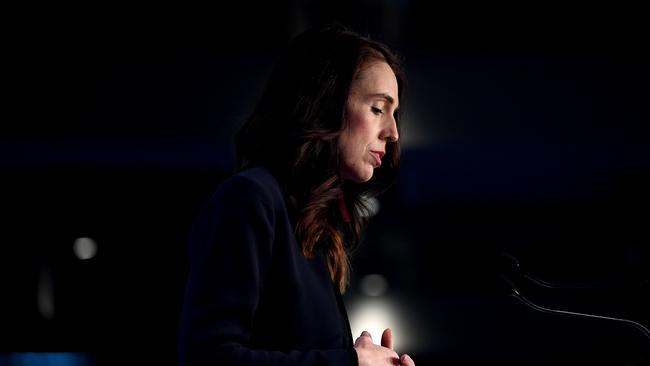
More up-to-date indicators show that the New Zealand economy has quickly rebounded from lockdown in the third quarter.
But new Treasury Department forecasts released on Wednesday predicted that the initial bounce back will become a drawn-out recovery, with unemployment continuing to rise until the first quarter of 2022.
A Wall Street Journal poll of economists had forecast the economy to contract 12.0 per cent in the second quarter from the first quarter.
New Zealand’s strict lockdown, which began in late March, temporarily extinguished local spread of the coronavirus virus.
A three-month period of no community transmission of the virus ended with a new outbreak in the largest city, Auckland last month that resulted in restrictions that were less severe than the first lockdown. — Dow Jones Newswire
READ MORE: Economy a priority for new Japan PM
Rachel Baxendale 8.50am: Victoria records 28 new cases, eight deaths
#COVID19VicData: Yesterday there were 28 new cases reported and 8 lives lost. Our thoughts are with all affected. The 14 day rolling average is down from yesterday as we move toward COVID Normal.
— VicGovDHHS (@VicGovDHHS) September 16, 2020
Info: https://t.co/pcll7yB2RZ #COVID19Vic pic.twitter.com/rB84oMGltl
Victoria has recorded its lowest daily increase in coronavirus cases since June 24, almost three months ago, with 28 cases in the 24 hours to Thursday.
There have been eight more deaths reported over the same period, bringing the state’s coronavirus death toll to 745.
All but 19 of these deaths have occurred as a result of Victoria’s second wave of coronavirus infections, linked to breaches in the Andrews government’s hotel quarantine program.
Mebourne’s 14 day daily average number of new cases is now 44.4, down from 49.6 on Wednesday
This compares with a 14 day daily average of 2.9 in regional Victoria, down from 3.5 on Wednesday.
There have been 83 cases with an unknown source of infection in metropolitan Melbourne in the most recent fortnight for which this statistic is available, and one in regional Victoria – representing a net increase of one unknown source case in metropolitan Melbourne since yesterday’s figures.
This fortnight spans from September 1 to September 14.
It is understood the regional Victorian unknown source case was reported on September 1.
The prerequisite for reopening of regional Victoria from 11:59pm on Wednesday night was a 14-day daily average of fewer than five cases, with no cases with an unknown source over that fortnight, with regional Victorians now released from stay-at-home restrictions, and regional Victorian hospitality businesses able to reopen.
In order for Melbourne to move to its next step of relaxing coronavirus restrictions by September 28, the 14-day daily average needs to be 30-50 – a threshold already achieved.
This will enable public outdoor gatherings of up to five people from up to two households, the resumption of childcare, and a staged return to the classroom for Prep to Grade Two and VCE students.
For the third step, which would see Melburnians released from a stay-at-home lockdown and a curfew by October 26, the statewide 14-day daily average needs to fall below five cases, with no cases with an unknown source over that fortnight.
The current 83 unknown source cases in Metropolitan Melbourne therefore represent a significant obstacle, unless that number can be brought down to zero in coming weeks.
READ MORE: I stand by my words on ADF offer, says Andrews
David Ross 8.26am: Qantas boss wants medical-based definition for hot spots
Qantas CEO Alan Joyce has called for a “common medical-based definition of hot spots” amid continued border closures between states over COVID-19 cases.
“What doesn’t make sense to us is we have states with low cases or no cases that are closed to other states,” Mr Joyce told ABC Radio National today.

“NSW has shown we can keep things open and get the virus under control.”
“It’s clear that politics is getting into this.”
His call comes as Qantas pushes its case for a broader border reopening, launching a petition in recent days.
Mr Joyce said Qantas stood ready to assist in bringing Australians home as part of the boosting of quarantine caps but needed the government to cover the cost of fuel and crews.
“We’re burning $40m in cash every week. We can’t put any services on unless we can cover the cash cost,” he said.
“The caps in place today, you can potentially carry only 50 people each flight. The economics do not work.
“We have been talking to the government about what if we can put special Qantas flights on to destinations and offer reasonable airfares. We’re still in dialogue with them and we’re hoping we can get some progress.”
READ MORE: PM’s message ‘left us feeling abandoned’
David Ross 8.17am: Coles has enough for Christmas, but ‘get in early’
Coles’ COO Matthew Swindells says the supermarket is confident it will meet Christmas demands after holding conversations with the Victorian government.
“Christmas is clearly a spike in demand and there is a large amount of stock that has to go out both to stores and to our customers. We just need to plan for that and continue to work together,” Mr Swindells told the Today show this morning.
But Mr Swindells warned customers to consider planning their purchasing with Christmas only 99 days away.
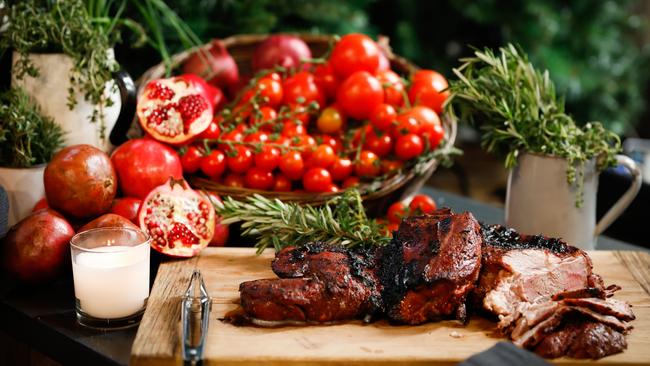
“The biggest challenge is to try and get that volume of stock that you need for customers through a supply chain that is engineered for the 51 weeks of the year rather than the 52,” he said.
“Don’t leave it to the last minute and try and pick quieter times to do shopping, maybe don’t pick Saturday or Sunday afternoon.”
READ MORE: Breakthrough on food supplies
David Ross 7.40am: Commercial flights can bring Aussies home: Morrison
Scott Morrison says he is glad to see arrival caps would be lifted to allow more Australians to return, but said suggestions the commonwealth use its own planes and camps to hold returnees were not needed.
“Our advice is there is no need for that,’’ the Prime Minister told Seven’s Sunrise this morning.
Asked if the government would consider using RAAF or chartered Qantas planes, Mr Morrison said: “We went through a process with our officials to work out the best way to get people home and it’s on commercial flights through the hotel quarantine system.
“There are plenty of commercial planes. They just need to lift the cap so they can run the services to Australia. It’s the caps that were stopping the planes. We were happy to agree to the premiers’ request back in July, but we are over that hump now and we can start lifting those caps,” he said.

“I really want to thank the New South Wales government. They are carrying half the load here and they are not just Sydneysiders and NSW people coming home. They are Tasmanians, Queensland, Western Australia.”
He said an extra 2000 Australians a week would be allowed to return under the new plans.
Mr Morrison said it was critical that interstate border restrictions were also dealt with, warning the disagreements had to be resolved if things were to get back to normal.
“I understand the concerns that are there. I never said they had to bring them down immediately. I have just said we have to have a sensible and fair exemption system and not have double standards,” he said.
“Every state has a different situation and I respect that but at the same time, have got to get to a situation where having these things doesn’t mean we are winning as a country when we deal with the virus. We have to deal with the virus. We have to deal with the virus, not let the virus destroy the way we live.”
Hot spots not so hot
Mr Morrison also said suggestions the government was working on a national hotspot model that would be imminently released were “overstated”.
“I’m not expecting a lot of progress on that by Friday, he told Nine’s Today show. “The Commonwealth has its hot spot definition. I think that’s a sensible definition.
“If other states want to have more extreme definitions than that, that’s up to them ultimately. That obviously has implications for how they run their show and what it means for people’s jobs and all of those sorts of things.”
Commenting on reports the government was preparing an overhaul of the citizenship test that emphasised English language requirements, Mr Morrison said command of English was a key to success.
“One of the things I learned when I was an immigration minister and a social services minister is that people’s employment outcomes as a migrant to Australia rapidly increase if they have got a good strong command of English,” he said.
“This puts an even greater emphasis on English language. It is in their interest, in Australia’s interests, it is our national language, it helps people get jobs, support themselves and not have to rely on welfare.”
READ MORE: Qantas grounds jets despite push for repatriation
Staff writers 7.35am: Andrews faces no-confidence motion
A motion of no-confidence against Daniel Andrews will be tabled in the Victorian parliament today, with a vote next month, The Herald Sun reports.
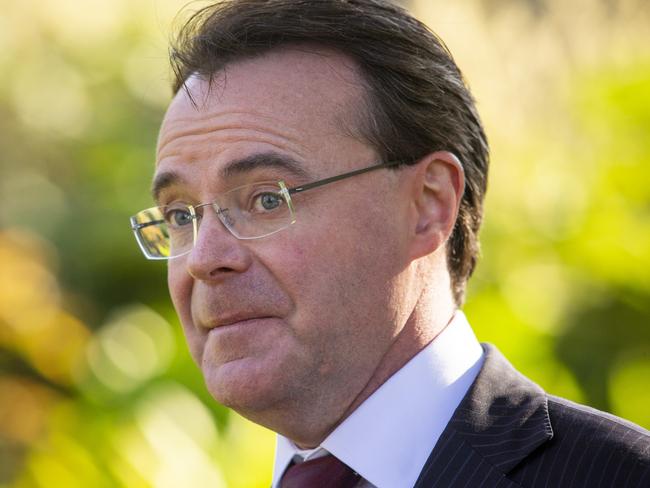
Opposition Leader Michael O’Brien will introduce the motion and put the vote to the lower house.
Mr O’Brien said the government had botched its handling of the pandemic, particularly with hotel quarantine and contract tracing failures which sparked Victoria’s deadly second wave.
He said Mr Andrews had lost the support of Victorians.
However, the motion will almost definitely be voted down as Labor holds a commanding 11-seat majority.
READ MORE: John Carroll — Brought low in pursuit of a Covid whale
David Ross 7.15am: Job site ads decline by a further 2pc
Job ads on SEEK have declined by 2 per cent, the first time a decline has been reported since April, new data shows.
But the gap between total ads on the platform compared to last year is now at its smallest extent, down 29.1 per cent.
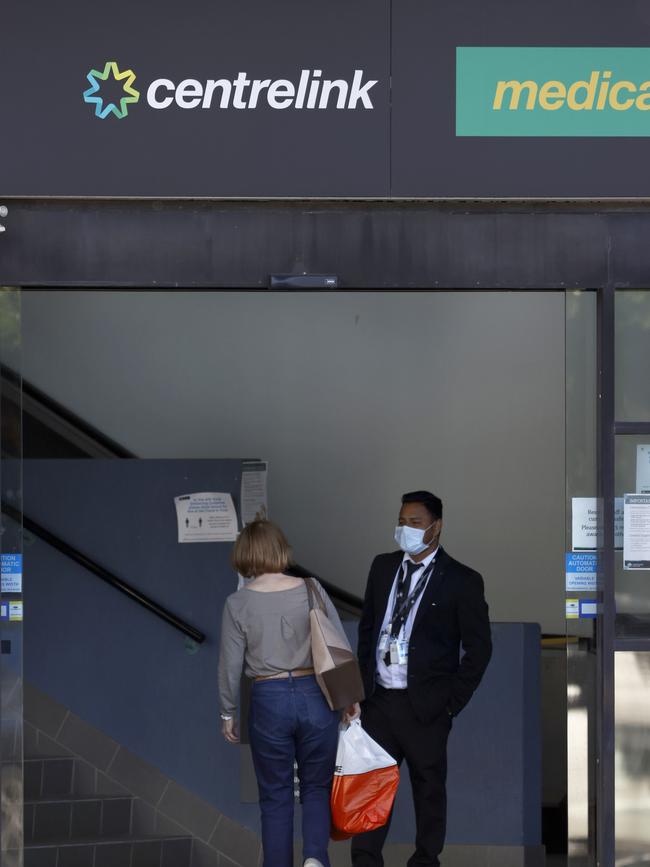
Victoria is the worst affected state in Australia where job ads in August were 56.1 per cent down on the same time last year.
Healthcare & Medical, Information & Communication Technology and Manufacturing, Transport & Logistics, were the most in-demand employment categories across the platform in August.
West Australia, New South Wales and South Australia were the top three states contributing to new job ads on the platform.
SA, WA and Tasmania have actually grown job ads on the platform compared to the same time last year.
SEEK ANZ, managing director, Kendra Banks said there were three distinct rates of recovery emerging.
“The first group are the states that have fully rebounded or have job ad rates comparable to pre-COVID levels — this includes Western Australia, South Australia, Tasmania and Northern Territory,” she said.
The second group are the states that are continuing to recover towards pre-COVID levels, which are Queensland, New South Wales and the Australian Capital Territory.”
“Unsurprisingly this leaves Victoria as the state which declined significantly for a second month, where stage four restrictions continue to have a major impact on businesses and hiring.
READ MORE: Private plan to fire million jobs, growth
David Ross 7.00am: NSW-Victoria border restrictions eased today
Border restrictions along the NSW-Victorian border will be eased today amid an easing of viral conditions south of the Murray.
Residents will be allowed to move more freely and additional areas will be included in NSW’s “border region”.
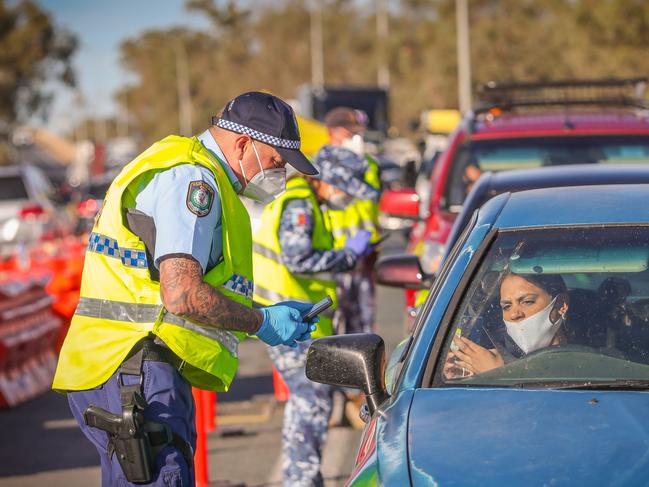
Pleasant Hills, Lockhart, Benalla, Bright, and Mount Beauty have now been included in the border bubble.
Victorian residents will no longer be obliged to comply with the stay-at-home directions imposed on regional Victoria while in NSW or be restricted to entering NSW for a “permitted purpose”.
NSW Health Minister Brad Hazzard said the changes follow an easing of restrictions in regional Victoria recently announced by the Victorian Government.
“I want to thank the border communities for their patience – we are able to ease restrictions on the border given the reduced risk of COVID-19 transmission in regional Victoria,” Mr Hazzard said.
“Any person with an existing border region permit will be able to take advantage of these changes, which we hope will make day to day life a lot easier for border communities.”
READ MORE: Dan’s ring of steel goes up
David Ross 6.50am: Global cases head to 30m, India to surpass US
Global COVID-19 infections are now set to hit 30m in the coming days, with real infections likely already well ahead of the official tally amid inconsistent testing and reporting.
Cases of the coronavirus in India have now passed 5m and analysts expect the country to surpass the United States as the worst affected nation in the coming weeks.
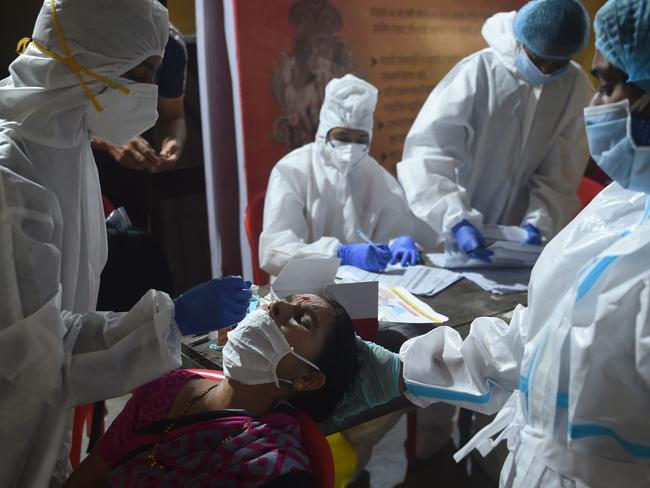
The rise in infections in India has seen more than 80,000 die and the viral pandemic spread to all parts of the country, including its most isolated island chains.
The spread of the pandemic comes as the Indian government aims at lifting restrictions across the country and put the economy back on a solid footing.
Gyms are set to reopen and many cities are allowing restaurants and bars to resume full service which some suggest may increase the spread of the virus.
Five states account for more than 60 per cent of India’s current caseload, but experts suggest some state governments are underreporting cases and deaths.
Russia will send more than 100m doses of its widely touted vaccine, of which the effectiveness is unknown.
The first results of the phase 3 trials of the Sputnik V vaccine are due in October and November.
At least 32 countries have expressed interest in testing and obtaining the Russian Sputnik V vaccine, with Brazil, Mexico and Kazakhstan so far signing on to supply deals
Brazil remains the hardest-hit country in South America but infections are now rapidly spreading across Argentina, Peru, and Colombia.
Argentina has now recorded more than 577,000 infections.
But the WHO is warning measures to reopen South American economies comes too soon and lacks appropriate pandemic controls.
In a bid to control the spread of infections Canada is aiming to triple its nationwide daily coronavirus testing capacity to 200,000.
While Israel is set to re-enter lockdowns on Friday as the country moves into the Jewish new year holiday period.
READ MORE: Brought low in pursuit of Covid whale
Rebecca Urban 6.45am: PM’s offers met by silence
Scott Morrison personally wrote to Victorian Premier Daniel Andrews three times in the space of a week in early July to offer the support of the defence force as it became apparent the state’s bungled hotel quarantine program had sparked a second-wave outbreak of coronavirus.
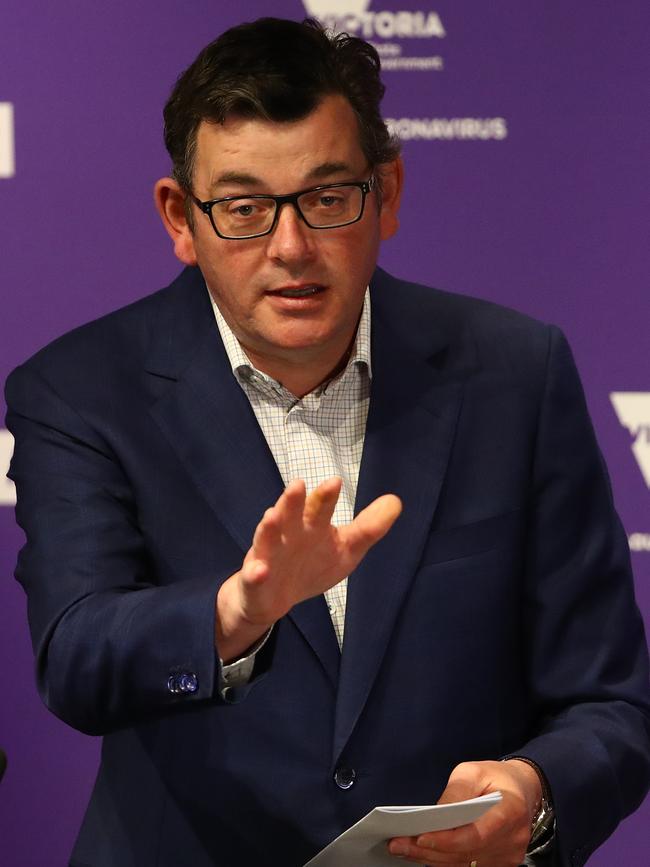
In a 149-page submission to the hotel quarantine inquiry, the Department of Prime Minister and Cabinet and the Defence Department revealed Mr Morrison repeatedly reached out to Mr Andrews reiterating the offer.
“When the COVID-19 case numbers began to escalate in Victoria by the end of June 2020, the Prime Minister wrote to Premier Andrews on three separate occasions (4 July 2020, 6 July 2020 and 11 July 2020) reaffirming the commonwealth’s preparedness to continue the provision of ADF support to Victoria as needed,” the submission stated.
Revelations of the Prime Minister’s offers of help to Mr Andrews came as the Premier said on Wednesday that he stood by his statement to a state parliamentary committee hearing last month that it was “fundamentally incorrect to assert that there was hundreds of ADF staff on offer and somehow someone said no”.
READ the full story here.
Anne Barrowclough 6.15am: Trial illness ‘unlikely to be linked to vaccine’
Symptoms of weakness in participants in the AstraZeneca COVID-19 vaccine trials which led to a pause in the trials probably weren’t related to the vaccine.
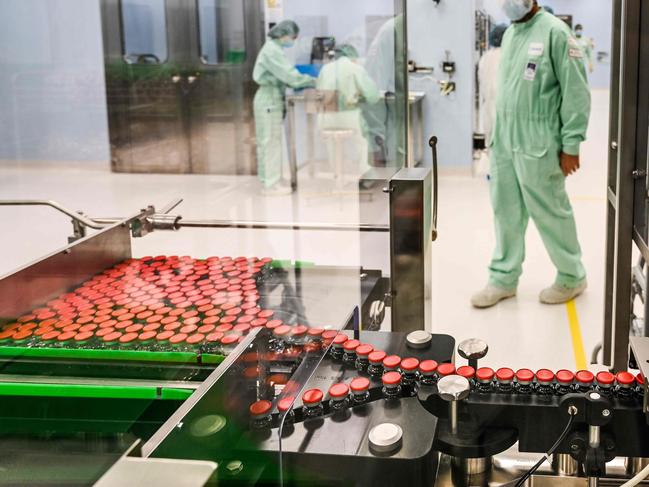
The late stage trials, carried out by AstraZeneca and the University of Oxford, were suspended for safety reviews last week when some volunteers developed “unexplained neurological symptoms,” Oxford University declared in an information sheet posted online.
The university stated that after independent review, “these illnesses were either considered unlikely to be associated with the vaccine or there was insufficient evidence to say for certain that the illnesses were or were not related to the vaccine. In each of these cases, after considering the information, the independent reviewers recommended that vaccinations should continue.”
AstraZeneca declared on Sunday that the trials would recommence.
READ MORE: Dan’s Great Wall of Melbourne goes up
Joe Kelly 5.45am: Public servant quit to call out Andrews
An economist with the Victorian Department of Finance and Treasury has resigned so he can call out Labor Premier Dan Andrews’ handling of the pandemic and the “police state” imposed on Melbourne residents.
Sanjeev Sabhlok, who resigned last week, has condemned the policies implemented by Mr Andrews and warned they will unfairly punish the poorest communities in Victoria while holding back business investment, skilled migration, education and tourism.

In an opinion piece written for the Australian Financial Review, Mr Sabhlok accuses Mr Andrews of being heavy handed in his response to the virus and likens it to the use of a “sledgehammer to kill a swarm of flies”.
Mr Sabhlok — who operates a blog largely dedicated to political and economic reform in India — argues the restrictions in Victoria will signal to the world Australia is “closed for business and doesn’t care for human freedoms”. He makes the argument that restrictions “could never have been justified” even if the coronavirus was to have proved as deadly as the Spanish flu.
Victoria’s Chief Health Officer, Brett Sutton, is singled out for criticism over comments in which he said the coronavirus was the “greatest public health challenge since the Spanish flu”, with Mr Sabhlok rejecting any comparison. “This is no Spanish flu,” he writes. “We can verify that easily.”
READ the full story here
Rosie Lewis 5.30am: Qantas grounds planes despite repatriation push
A demand by the Morrison government for the states to boost hotel quarantine capacity by 2000 a week won’t convince Qantas to reinstate international flights before July next year, as more than 3000 “vulnerable” Australians remain stranded overseas.

Deputy Prime Minister Michael McCormack ordered NSW, Queensland, Western Australia and South Australia to substantially increase their caps on hotel quarantine so that 6000 Australians could return home each week, up from 4000.
Western Australia Premier Mark McGowan declared the surprise request went against “the spirit of the national cabinet”, while NSW Premier Gladys Berejiklian said her state could manage the extra load but only if others also agreed to lift their numbers.
Under Mr McCormack’s proposal, which was detailed in a letter sent to the premiers and chief ministers ahead of the national cabinet meeting on Friday, the weekly cap for NSW, Queensland and Western Australia would increase by 500 respectively.
South Australia would take in an extra 360 weekly arrivals.
Read the full story here

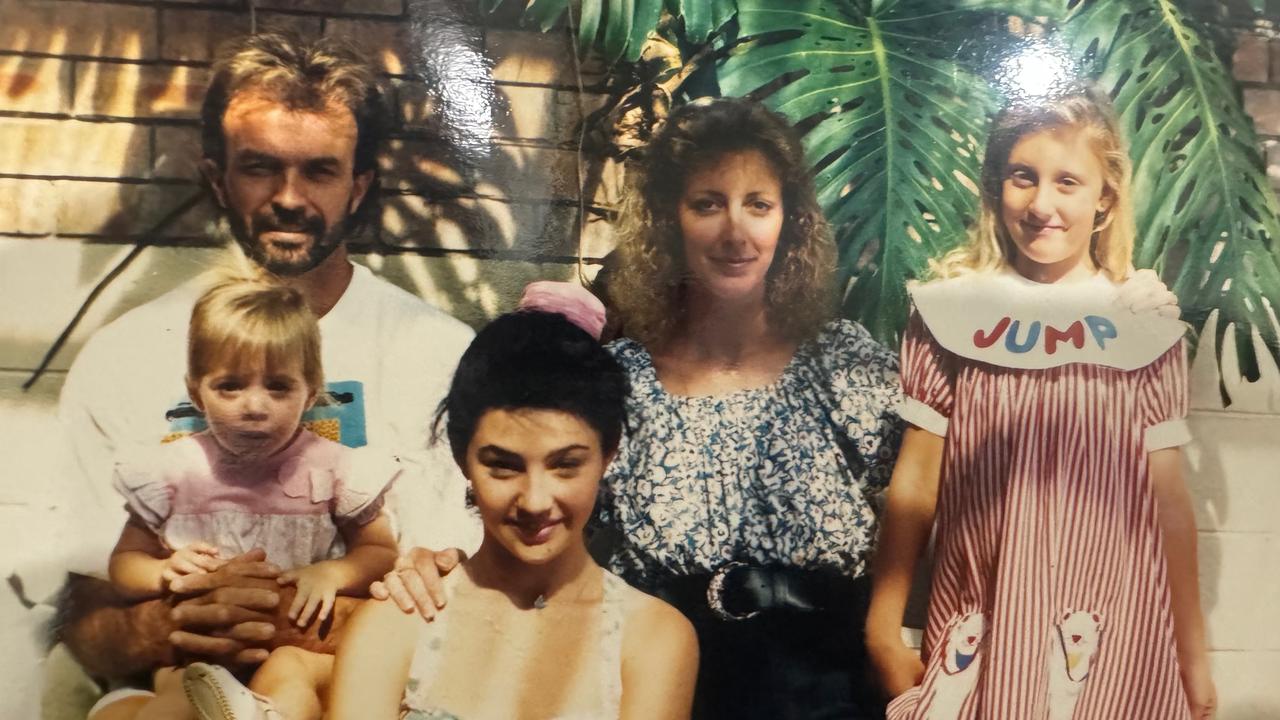
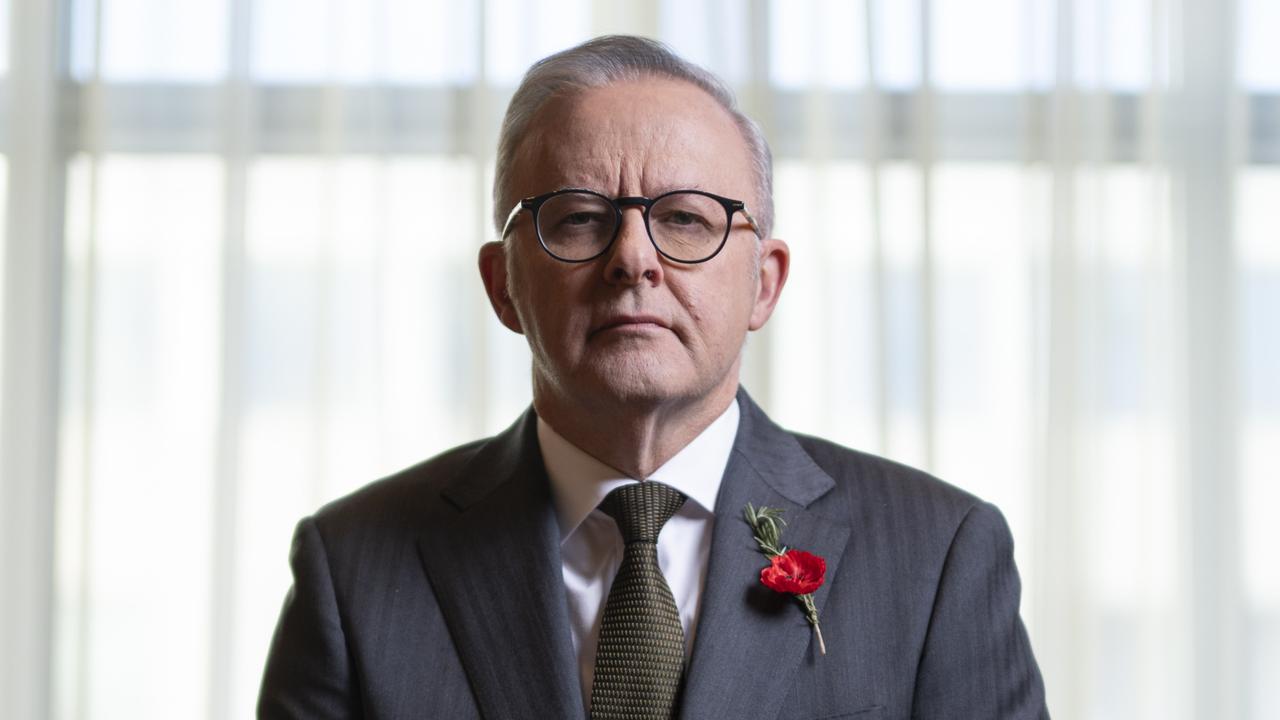
To join the conversation, please log in. Don't have an account? Register
Join the conversation, you are commenting as Logout